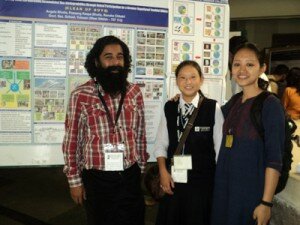Water, an emerging business risk
source:The Hindu businessline
Companies need to have their internal water policies and improve disclosures
on water use.
The recently released Draft National Water Policy 2012 says “large
parts of India have already become water-stressed. Rapid growth in demand for
water due to population growth, urbanisation and changing lifestyle pose serious
challenges to water security.”
Yet, most companies have not woken up to the risk related to water
or emanating from water, and few have assessed their exposure to water risk.
Even the companies that do not foresee water as a challenge in the near term may
be at risk due to challenges imposed by climate change and its impact on water
availability.
As a consequence, regulation may become more stringent on water
use and wastewater discharge to prevent depletion and degradation of water
resources. Growing awareness about water challenges may increase the society's
expectations about the way water is used by companies.
corporate/business risk
The business risk emanating from a company's relationship to water
can be broken into three broad categories, namely, physical, regulatory and
reputational.
Physical risk relates to both quantity (scarcity/flooding) and
quality (pollution) of water. This can be caused by drought or long-term water
scarcity, unequal allocation among users, flooding, or pollution that renders
water unfit for use. Physical risk means that a company may face difficulty in
accessing adequate amounts of quality water for its business operations and
supply chain.
Regulatory risk relates to governance of water uses by
law/legislation. It occurs because of changing, ineffective, poorly implemented
or inconsistent water policies, and involves pricing of water supply and
wastewater discharge, licences to operate, water rights, quality standards, etc.
Reputational risk relates to the impact on a company's
brand/image. With growing public and media awareness — about how companies are
handling water resources — is becoming important.
Any conflict around access/use/degradation of water often leads to
adverse publicity for the company, which in turn adversely impacts its client
base.
All of these risks individually or collectively can threaten a
company's legal and social licence to operate and in worse cases could also lead
to closure of a company's operation.
It is therefore important for companies to have an internal water
policy that is aligned to both local sensitivity and national policy.
Companies must report regularly about their conduct and actions on
water in the public domain to earn and maintain the confidence of various
stakeholders.
Are companies doing that? Over the past two decades, a growing
number of companies have begun to publish non-financial reports covering their
conduct and actions on environmental and social issues that include water for
the benefit of stakeholders and public.
Corporate Reporting
For assessing corporate reporting on water by publicly held
companies in India, we looked at the data base of S&P ESG India Index. The
data base collects information on disclosures made by companies on four
parameters: (a) policy/initiatives for management of water use; (b) total water
used; (c) total water used by source; and (d) policy for management of
wastewater discharged. Currently, this information is available for six years
(see table) and reveals the following:
(a) The number of companies reporting that they have
policies/initiatives for management of water use is low, but is increasing.
Water policies/initiatives by the companies provide background or overview of
their water management. About 30 per cent of the companies in 2010 reported that
they have policies/initiative in place for management of water use. In 2005,
this percentage was only 20 per cent.
Although over the years the situation has improved, most companies
either still do not have a water policy/initiative in place or do not report
such information in public domain.
(b) Companies hardly disclose information on total water used by
them. Despite about one-third of the companies reporting having
policies/initiatives in place for management of water use, only 3.3 per cent of
the companies in 2010 disclosed information about their total water used.
(c) Their reporting on the total water used by sources is even
worse. Not a single company disclosed information on the total water used by
source in 2005. Even in 2010, only 1.5 per cent of the total companies made this
disclosure.
(d) About one-fifth of the companies report that they have policy
for management of wastewater discharge. Management of wastewater discharge by
companies is an important aspect of tackling growing water pollution.
From about 12 per cent of the companies in 2005 disclosing that
they have a policy on waste water discharge, the percentage of such companies
grew to 22.1 per cent in 2010.
The disclosure and reporting pattern of companies are likely to
differ because water uses/requirement as also wastewater discharge varies across
sectors. Some sectors require high-quality water as a key input for production,
while others use water mainly for cooling or in-plant processes.
Some businesses produce high volumes of wastewater, while others
are more concerned about the quality of wastewater discharge.
Therefore, companies that belong to the sectors where water
use/requirement is critical, or is publicly more visible in the production
process, are more likely to have water and wastewater discharge
policies/initiatives in place, compared with other sectors.
This is also borne out of the S&P ESG India Index data base,
which shows that a relatively high percentage of companies belonging to energy,
materials and utilities sectors reported that they have policies for management
of water/wastewater discharge. This was followed by companies belonging to
health care, consumer staples and other consumer sectors.
(Mr Sinha and Ms Bhardwaj are Director, Economy Research, and
economist, respectively, at Crisil Ltd. Views expressed are personal.)







 One is guaranteed a liberal dose of altitude and mean rides
on a SUV to reach this place, in a far flung corner of Sikkim.
One is guaranteed a liberal dose of altitude and mean rides
on a SUV to reach this place, in a far flung corner of Sikkim. 

